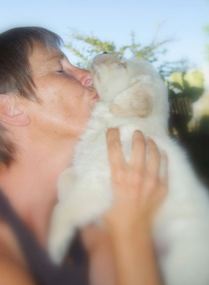We live in a society of instant gratification with hasty moving
from job to job, home to home and relationship to relationship. This behavior
encourages walking away from situations and people without looking back or
processing anything. This disconnected behavior doesn’t naturally encourage the
important step of conscious closure. For the sake of this blog, conscious
closure is finishing something with full mental, emotional and spiritual
awareness. For me, conscious closure buttons down the hatches completely,
leaving no loose ends: no things unsaid, no feelings unobserved.
Conscious closure is an acquired skill. We get better at it
the more we do it. At first it can be scary. This is true especially for those
of us who have experienced a lot of loss and abandonment in our lives. We can
learn the process if we are willing and patient.
The first step is to be willing
to let go. Letting go is very difficult sometimes and our attachment,
especially to a person, place or thing can be strong. There are times, though,
when we have outgrown situations or people or we are being injured emotionally,
physically or spiritually in some way that calls for action. It is time to let go
and we must find a way to finish “it” cleanly.
Being willing involves feeling all the emotions that come
up. You can expect there will be a lot of challenging emotions. Learning to
allow feelings to wash over us is critical. The old way of us getting stuck in
our feelings and then “thinking” them over and over does not work and needs to
be updated. Having a strong support system to help keep us honest and not allow
us to tell ourselves lies to minimize the situation so that we stay too long
can be invaluable.
After we’ve told the truth to ourselves and accepted
willingly to move on and deal with the feelings that have come up, it’s time to
begin the process of letting go. Some people stay in this part of the process
for a while and continue working with their feelings. I find it helpful to set
a time limit to be in this phase so that inertia doesn’t keep us stuck in the
feelings of fear of moving on. Give yourself 6 weeks or 6 months or whatever
works for you--but have an ending point.
Moving on usually means addressing some part of the
situation outside of ourselves. This can often mean communicating your needs
and intentions to another person. This can be really scary but is necessary. Before
communicating it is helpful to write out all you are feeling and exactly what
you need to say. No matter how you choose to communicate, it is best to keep
your intentions simple and to own
your part in the situation. To be successful there can be no blaming. You are just stating what you need and intend to do.
(Blaming invariably ignites arguing and makes healthy communicating impossible.
Avoid it!)
The next step can feel really difficult—allowing the other
person to have their responses and feelings without you feeling responsible. It
is important to let them have their feelings. It is equally important to
protect yourself and set boundaries around listening to them, especially if you
are vulnerable to wanting them not to be uncomfortable or feel hurt. It can
seem cruel to set limits on how much you participate in their process but it is
important to let them use their own resources to work on it. Your work is
dealing with your feelings. Their work is dealing with theirs.
In an ideal world, this is where the alchemical process of conscious
closure would begin to percolate. It would involve sharing the good parts of
the situation, expressing any unfinished business and communicating feelings,
regrets, needs, and anything else that would bring things to a healthy finish.
If one person is stuck in their process and is blaming and wanting the other to
take responsibility for their feelings, then the conscious closure needs to
happen within and not with them.
The process of conscious closure is one that feels great
when it is done by both sides and is completed out of mutual respect and
support. The creativity of this process can bring you to a new level and the
change can be most gratifying. This is the best possible outcome. I practice
holding onto the best possible outcome in my mind’s eye by imagining and visualizing
what will be said, felt and known. It gets easier to be truthful and
communicate your needs to others with practice. It is important to allow
yourself to practice reaching for conscious closure in the minutest of aspects
of your life every day. Then, when the big things come up you will be well
along your way of attaining conscious closure and finishing things well.








